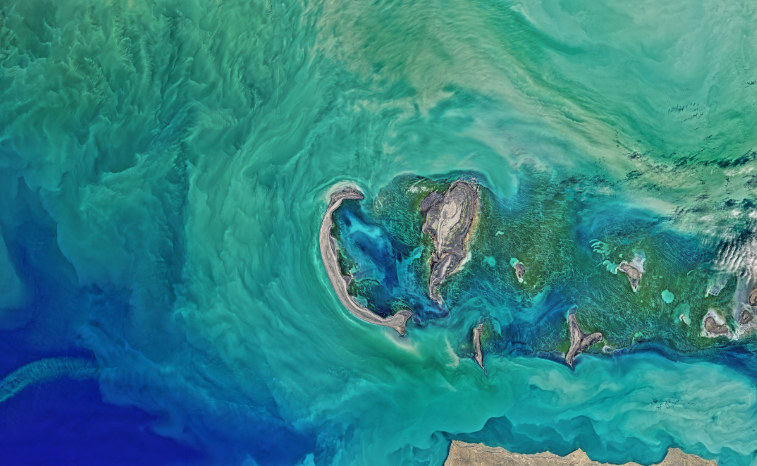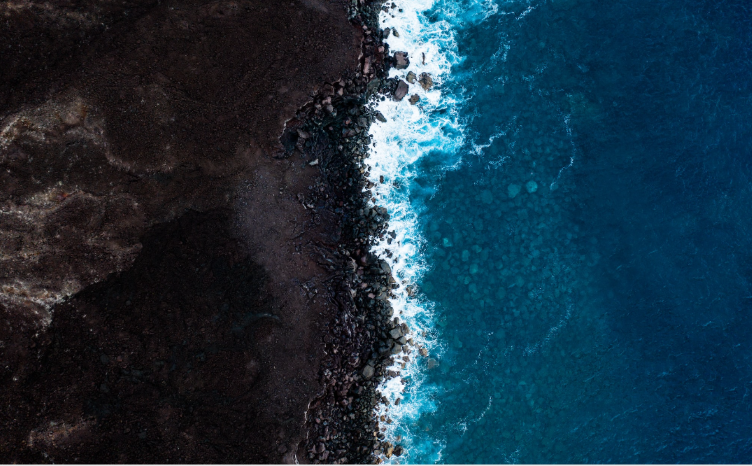Water everywhere – how much liquid does our Earth really hold?

Seen from afar, the Earth is mostly water. Only 29% of its surface is land, and as much as 71% is water. No other celestial body, as far as we know today, has liquid water on its surface, and our Earth is bathed in it! Lucky us!
Most of the water is in the oceans and seas (almost 97%), but there is also water frozen at the poles and in glaciers, it is in rivers, lakes, swamps, then in the ground and in the atmosphere. It is also present in all living beings including ourselves.
If we gathered all the water of the oceans and seas, all those 1,338,000,000 cubic kilometers of water, into one sphere, its diameter would be only 1385 kilometers.
But not all the water is on our planet. Large amounts of water are found underground. It consists of underground rivers, lakes, swamps. All this water is precious for life on land, especially in desert regions where there is no water on the surface, except for the rare hours when the rain moistens the ground.

The problem is that large reserves of underground water are hundreds of meters deep, sometimes even a kilometer deep, so it is mostly unavailable for exploitation. If we gathered all that water into a ball, its diameter would be 272.8 kilometers.
But this is not all the water either. For us, terrestrial beings, this is the most important water, the one that sustains the life of us seven billion people and countless billions of other living beings that live on and in the earth.
These are all the waters of rivers and lakes, and according to the water list, there are 93,113 km3. The sphere of that water would have a diameter of 56.2 kilometers.
Where does this paradox with the amount of water come from? On the one hand, we see that water has almost swallowed the planet, and on the other hand, that it makes up only an insignificant part of the same planet.

Well, the reason is that, compared to the diameter of the planet, water is spread out in a very thin layer over the Earth. The ground is quite smooth. Here is a famous example: if we were to enlarge a billiard ball to the size of the Earth, we would see huge chasms and mountains on it, much larger than what exists on Earth.
The Earth is therefore almost perfectly smooth. Mount Everest, the highest mountain on our planet, 8,848 meters high, cannot be seen against the Earth’s diameter of 12,742,000 meters. The deepest depth on Earth, in the Mariana Trench at the bottom of the Pacific Ocean, is less than 11 kilometers and is invisible compared to the over 12 thousand kilometers diameter of the Earth.
How much water there is on Earth, a little or a lot, depends on what you compare it to.

